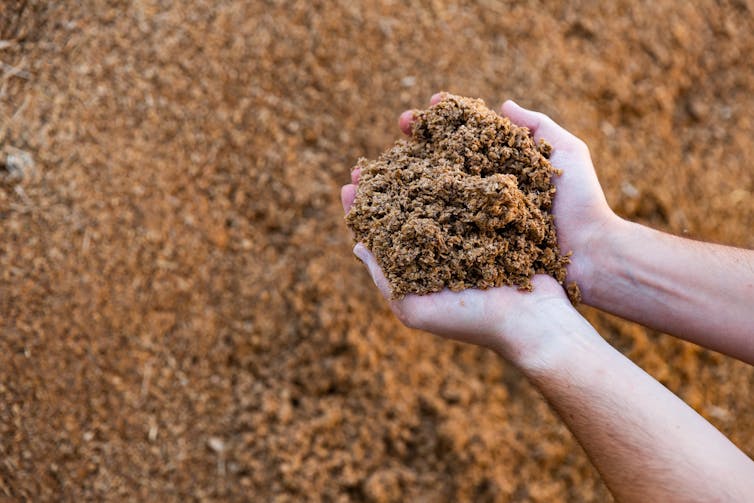
Whether customers are pleased to hear it or not, firms are selling “(opens in a new window)upcycled” food to (opens in a new window)tackle food waste internationally.
Food with ingredients that were saved from the waste heap via verifiable supply chains is said to be “upcycled”. The term originated (opens in a new window)in the US, though it’s also been adopted on this side of the Atlantic.
This rather broad definition includes byproducts from the food industry, such as spent grains left over from beer manufacturing, or apple pulp that doesn’t make it into juice.
If you’re not familiar with the idea, perhaps you have already bought upcycled produce in the form of wonky carrots and potatoes. This is food that does not meet the visual standards of most supermarkets but is nevertheless still tasty to eat. Elsewhere, food manufacturers are making products that include upcycled ingredients.
Why upcycle food in the first place? The (opens in a new window)US Environmental Protection Agency rates it as just as effective as donating or redistributing food to restaurants and shelters for reducing the environmental impact of the food system. Wasted food, after all, can generate potent greenhouse gases such as methane if left to rot in landfills.
So it’s good for the planet if ingredients that would not have gone to human consumption are transformed into new food-grade products. But just how good exactly?
How much of a product contains upcycled ingredients will influence its sustainability credentials. If they are listed at the beginning of the ingredients on the packaging then that indicates a large percentage of inclusion. Far down at the bottom suggests a smaller percentage.

Of course, there is only so much of an upcycled ingredient that can be added to food before it affects the colour, taste or flavour of the final product. It is important to (opens in a new window)keep a balance.
According to the US upcycled food certification standard, a product only needs to contain (opens in a new window)a minimum of 10% upcycled inputs by weight in order to be certified as upcycled. This may only make a slight difference to a single product’s overall sustainability.
Compare it with organic food. Both (opens in a new window)in the US and (opens in a new window)in the EU, a product must contain a minimum of 95% of certified organic ingredients to be labelled organic. The EU loosely (opens in a new window)defines “organic” as food that “respects the environment and animal welfare”.
This is very far from the 10% required by the certified standard for upcycling used in the US. Of course, it would be quite hard to make an upcycled product with at least 95% upcycled ingredients. Think about a biscuit. Most of the major ingredients – flour, butter, sugar – would need to be upcycled. On the other hand, would 10% be enough to encourage you to buy food certified as upcycled?
Before you spend on spent grain...
While I believe that attempts to include upcycled ingredients in food formulations should be encouraged, however big or small, it is important to have rules in place.
In the EU, upcycled foods are not regulated and there are no certification standards, though some product packaging may claim it contains upcycled ingredients. Consumers might buy a product with a sprinkling of upcycled ingredients thinking that it is a more sustainable choice.
For example, a (opens in a new window)loaf of bread recently sold in Tesco was reported to contain 2.5% spent grain by weight. In other cases, the level of inclusion appears to be quite substantial. Granola sold in Ireland claims (opens in a new window)30% spent grain from brewers, but it is not clearly stated in the ingredient list.

Often, consumers are asked to pay more for upcycled food, even though it contains ingredients that would have otherwise gone to waste. This is because the producers are often small start-ups with high production costs that they must recoup with high prices.
If sustainability claims are at stake, and if consumers are asked to pay more for upcycled foods, it is important to prevent deceptive marketing that could present products as more sustainable than they actually are. One way to do so is by carrying out a (opens in a new window)life-cycle assessment, a measurement of a product’s environmental impact from its production to its disposal. The manufacturer could do this as a way of reassuring the consumer and backing up any claims with evidence.
If we want upcycled foods to become more common, and so reduce waste, we have to make sure consumers aren’t being misled. If consumers trust, value and understand these products, they are more likely to succeed in the market.
By: (opens in a new window)Simona Grasso, Assistant Professor & Ad Astra Fellow in Food Science and Nutrition, (opens in a new window)University College Dublin
This article is republished from (opens in a new window)The Conversation under a Creative Commons license. Read the (opens in a new window)original article.






